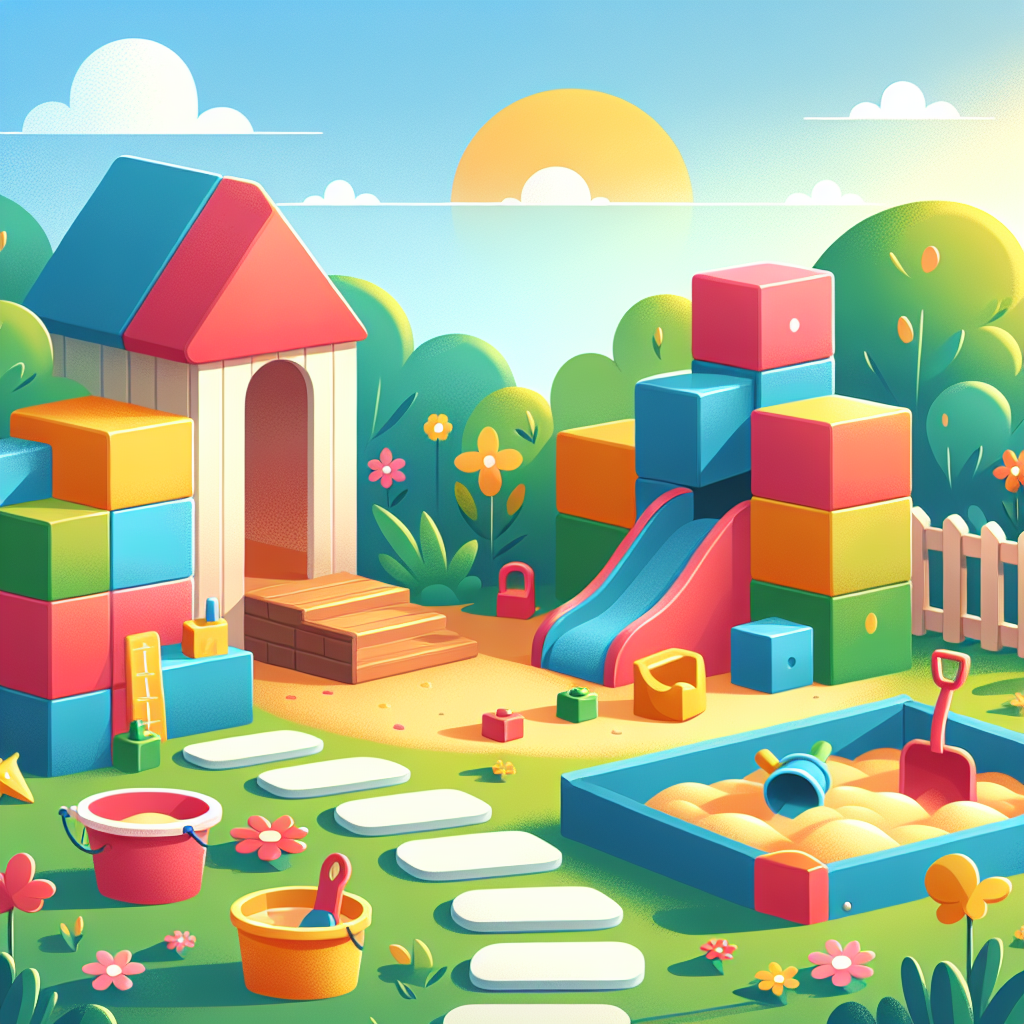How to Create a Toy Garden for Outdoor Play
Transforming your backyard into a magical toy garden can be a dream come true for both children and adults alike. Imagine a space where creativity blossoms, and little ones can explore, play, and let their imaginations run wild. In this blog post, we’ll guide you through the steps to create a delightful toy garden for outdoor play, combining fun, safety, and a touch of whimsy. 🌻
Table of Contents
1. Introduction
2. Planning Your Toy Garden
3. Choosing the Right Toys
4. Designing a Safe and Fun Layout
5. Incorporating Natural Elements
6. Maintaining Your Toy Garden
7. Conclusion
8. FAQs
Planning Your Toy Garden
Before you start digging and planting, it’s essential to plan your toy garden thoughtfully. Consider the available space, your child’s age, and preferences. Ask yourself: What activities will your children enjoy the most? Do you want to include educational elements? Planning thoroughly ensures a garden that grows with your child.
Choosing the Right Toys
The heart of any toy garden is, of course, the toys! Choose toys that inspire creativity and physical activity. Here are some suggestions:
1. Sandbox and Water Play: Sand and water tables provide endless hours of imaginative play. They’re perfect for sensory exploration and fine motor skill development.
2. Climbing Structures: Consider age-appropriate climbing structures like small slides, climbing walls, or even a treehouse for older kids.
3. Musical Instruments: Outdoor musical instruments, such as drums or xylophones, add a delightful auditory element to your garden.
4. Garden Tools and Supplies: Encourage green thumbs by including child-sized gardening tools and a small plot for planting flowers or vegetables.
Designing a Safe and Fun Layout
Safety should always be a priority when designing your toy garden. Here are some tips to ensure a secure play environment:
1. Soft Landing Zones: Use mulch, sand, or rubber mats to create soft surfaces under climbing structures and swings.
2. Clear Pathways: Designate clear pathways to prevent accidents and foster easy movement throughout the garden.
3. Shade and Weather Protection: Install shade sails or umbrellas to protect children from harsh sun and rain.
Incorporating Natural Elements
A toy garden wouldn’t be complete without some natural elements. Including plants and natural features can enhance the play experience and teach children about the environment:
1. Flower Beds and Shrubs: Plant colorful flowers and shrubs that attract butterflies and other beneficial insects.
2. Sensory Plants: Include plants with interesting textures and scents, like lavender or rosemary, to stimulate the senses.
3. Natural Play Materials: Use logs, stones, and pinecones to create natural play areas and encourage imaginative play.
Maintaining Your Toy Garden
Once your toy garden is up and running, regular maintenance will keep it safe and enjoyable:
1. Regular Inspections: Check toys and structures for wear and tear, and repair or replace as needed.
2. Seasonal Care: Prepare your garden for different seasons by protecting plants and storing toys during harsh weather.
3. Involve the Kids: Encourage children to help with maintenance tasks, such as watering plants or tidying up toys, to teach responsibility.
Conclusion
Creating a toy garden is a rewarding endeavor that brings joy and learning opportunities to your children. By thoughtfully planning and maintaining this outdoor space, you provide a haven for play and exploration that can grow and change with your family. Start small, dream big, and watch your toy garden come to life! 🌿
FAQs
Q: How much space do I need for a toy garden?
A: You can create a toy garden in any size space, from a small patio to a large backyard. Tailor the design to fit your available area.
Q: What age group is a toy garden suitable for?
A: Toy gardens can be designed for children of all ages. Just ensure the toys and layout are age-appropriate.
Q: How can I incorporate educational elements into the toy garden?
A: Include educational toys like puzzles, alphabet games, or a small vegetable patch for learning about nature.
Q: How often should I check the toy garden for safety?
A: Conduct safety checks at least once a month, or more frequently if your garden sees a lot of use.
